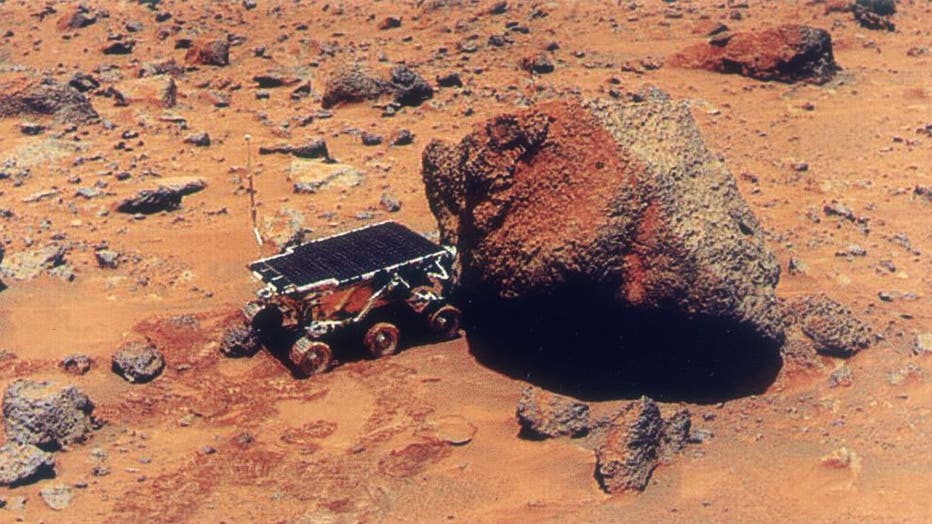Is Martian dust dangerous? New study reveals long-term health risks for astronauts
The terrifying reality of colonizing Mars
Elon Musk wants to colonize Mars in our lifetimes. Is it scientifically possible? What are the physiological effects of inhabiting another plant for us humans?
LOS ANGELES - Astronauts on future missions to Mars may face more than just extreme temperatures and radiation.
New research suggests the very dust beneath their boots could pose long-term health hazards. Scientists from the University of Colorado Boulder and USC’s Keck School of Medicine examined Martian soil’s chemical makeup — and what they found raises red flags for human safety.
The team says Martian dust could lead to serious respiratory and hormonal health issues, making it one of the more preventable but overlooked dangers of space travel.
What Martian dust is made of
By the numbers:
Researchers used data from Mars rovers, meteorites, and satellite imagery to study the planet’s surface. What they found was a mix of minerals and toxic compounds:
- Silicates and iron oxides: Common in Martian soil and responsible for its red hue
- Heavy metals: Including arsenic and beryllium, known to be harmful in high doses
- Perchlorates: Highly oxidizing compounds that may interfere with thyroid function
Even in small amounts, these elements could be harmful when inhaled over long periods — particularly during extended missions where astronauts may spend more than a year on the Martian surface.
Why Martian dust is a bigger deal than it sounds
Why you should care:
Dust particles on Mars are incredibly small — about 3 micrometers across. That’s small enough to bypass the body’s natural defenses, lodge deep in the lungs, and potentially enter the bloodstream.
The research team compared this risk to conditions on Earth, like silicosis, a disease found in workers exposed to fine silica dust such as coal miners or glass blowers. There is no cure for silicosis, and symptoms include chronic breathing difficulties and lung damage.

The Sojourner Rover uses its Alpha Proton X-Ray Spectrometer (APXS) to analyse the Yogi Rock on the surface of Mars, during the Mars Pathfinder exploratory mission, July 1997. (Photo by Space Frontiers/Hulton Archive/Getty Images)
More alarmingly, perchlorates found in Martian dust have been shown to disrupt thyroid function, possibly leading to anemia and hormonal imbalances. Even trace exposure could have long-term consequences, researchers say.
How to prevent Martian dust exposure
What's next:
The study's authors say the time to prepare is now — before anyone sets foot on the red planet.
- Filters and barriers: New filtration systems could help prevent dust from entering habitats
- Protective gear: Suits and entry systems must be designed to reduce contamination after spacewalks
- Supplement protocols: Iodine supplements may counteract thyroid disruption, but dosage must be carefully monitored
"Prevention is key," said lead author Justin Wang. "The best thing we can do on Mars is make sure astronauts aren’t exposed to dust in the first place."
The Source: Reporting is based on findings published in the journal GeoHealth and a summary provided by the University of Colorado Boulder. The research was led by Justin Wang of USC's Keck School of Medicine and CU Boulder geologist Brian Hynek. Additional insights were drawn from CU Boulder’s official press release and supporting Mars rover mission data.

